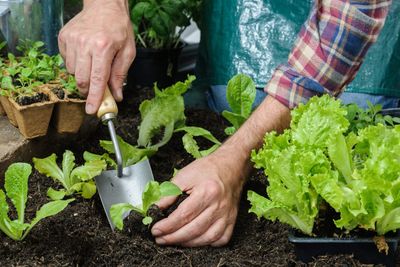When to Plant Crops in Zone 5
When do you plant vegetables in zone 5? This is a very important detail if a successful garden is to be achieved. Young starts are very susceptible to late season freezes. Zone 5 can experience temperatures of -10 to 0 degrees Fahrenheit (-23 to -18 C.). Planting anywhere near the time of year these temps are experienced is plant suicide. You need to know the date of your last frost. This is the optimum time for planting vegetables in zone 5. May 30th is the recommended time for zone 5 vegetable planting. This is the date when all chance of frost has passed in the zone. In some zone 5 areas, the date may be a tad earlier due to temperature fluctuations. That is why the United States Department of Agriculture has put out a zone map. All you have to do is find your region and then note your zone. The zone will also give you the average annual extreme minimum temperature, or how cold the region can get. Most major countries have a similar system. Zone 5 has two divisions, 5a and 5b. The difference in temperatures may help you know when to plant crops in zone 5. The areas designated 5b are a little bit warmer than those in 5a and might be able to get away with planting earlier.
Tips on Planting Vegetables in Zone 5
Seed packets are filled with pertinent growing information. You can find out when to start seeds for transplant, which generally states the number of weeks before plants can be set out. This is valuable information for planting vegetables in zone 5 where gardeners often need to start seeds indoors or purchase starts. These babies can then be hardened off and planted outdoors at the appropriate time. Hardening off helps prevent plant shock which can diminish plant health and sometimes cause death. Gradually introducing indoor grown plants to the outdoors before removing them from pots and installing them into the ground will prepare them for outdoor conditions. Direct sunlight, soil temperatures, ambient temperatures, and even wind are all conditions the plant must adjust to in order for a successful transplant. Careful preparation of the garden bed will enhance plant growth and production. Fluffing up the soil to a depth of at least 8 inches (20.5 cm.) and adding well-rotted manure or compost increases porosity, nutrient content, and allows fine, young roots to spread easily. It may be a good idea to do a soil test to determine if any major nutrients are missing in the soil. Prior to planting is the best time to mix in additives so plants will have their perfect nutrient needs. Moisten the soil well and keep young plants from drying out. As plants establish, supports such as stakes or cages are necessary for larger plants that may sprawl on the ground, exposing their fruits and vegetables to insect pests or rot. As long as planting takes place after the date of the last frost and soil is fertile and well draining, you should be eating from your garden in no time.
